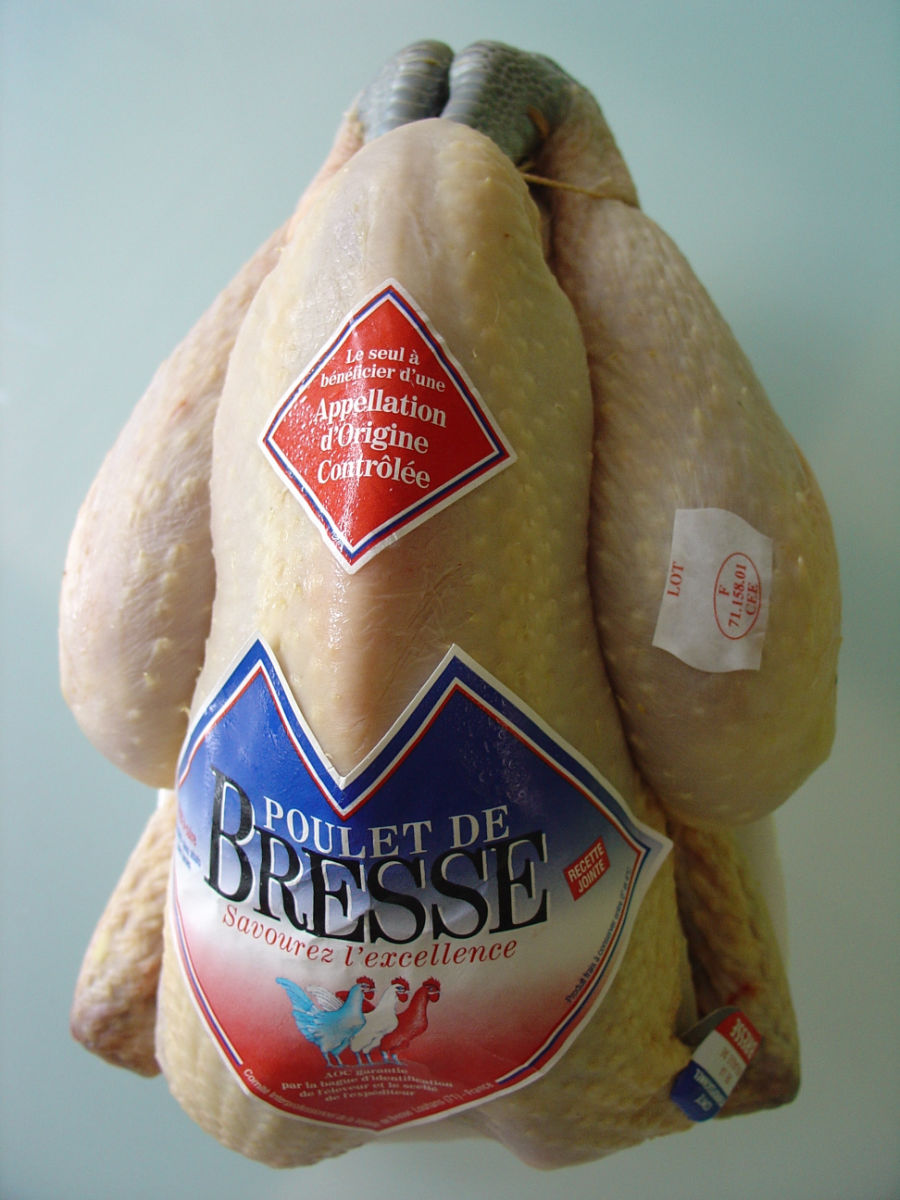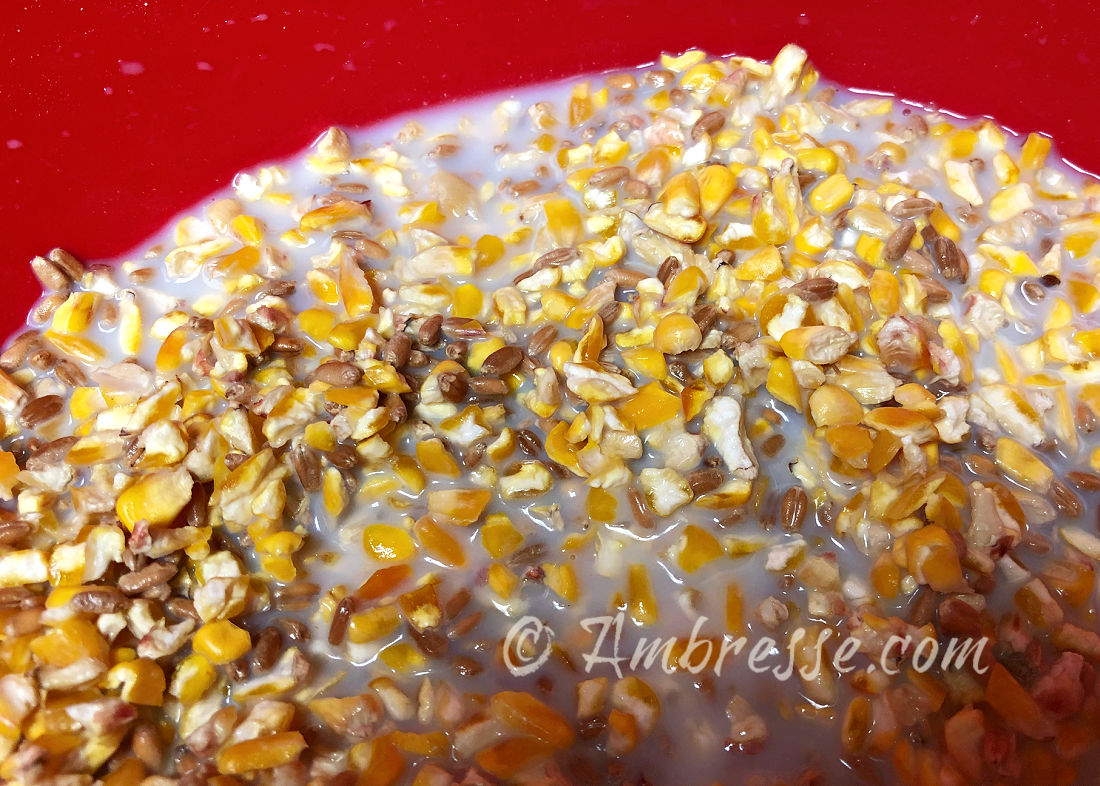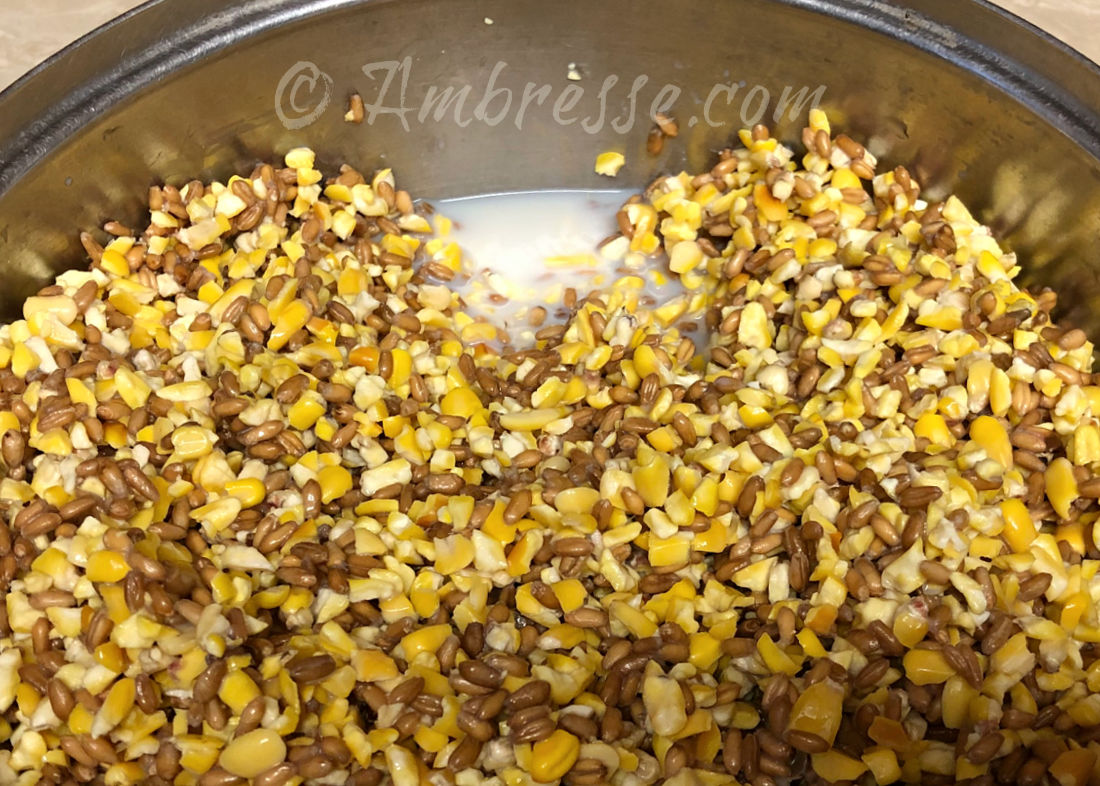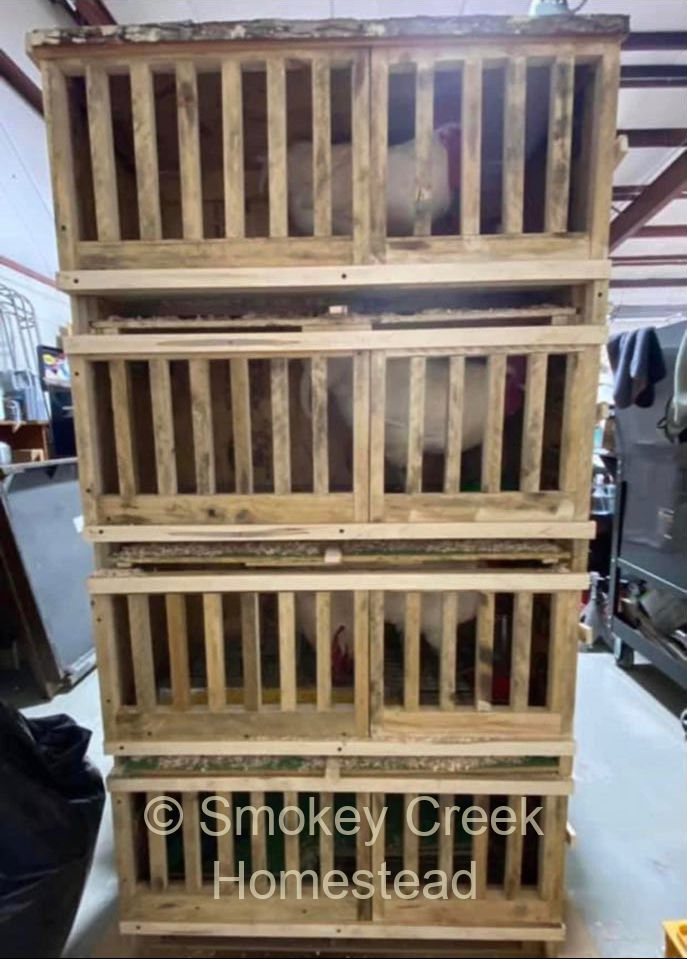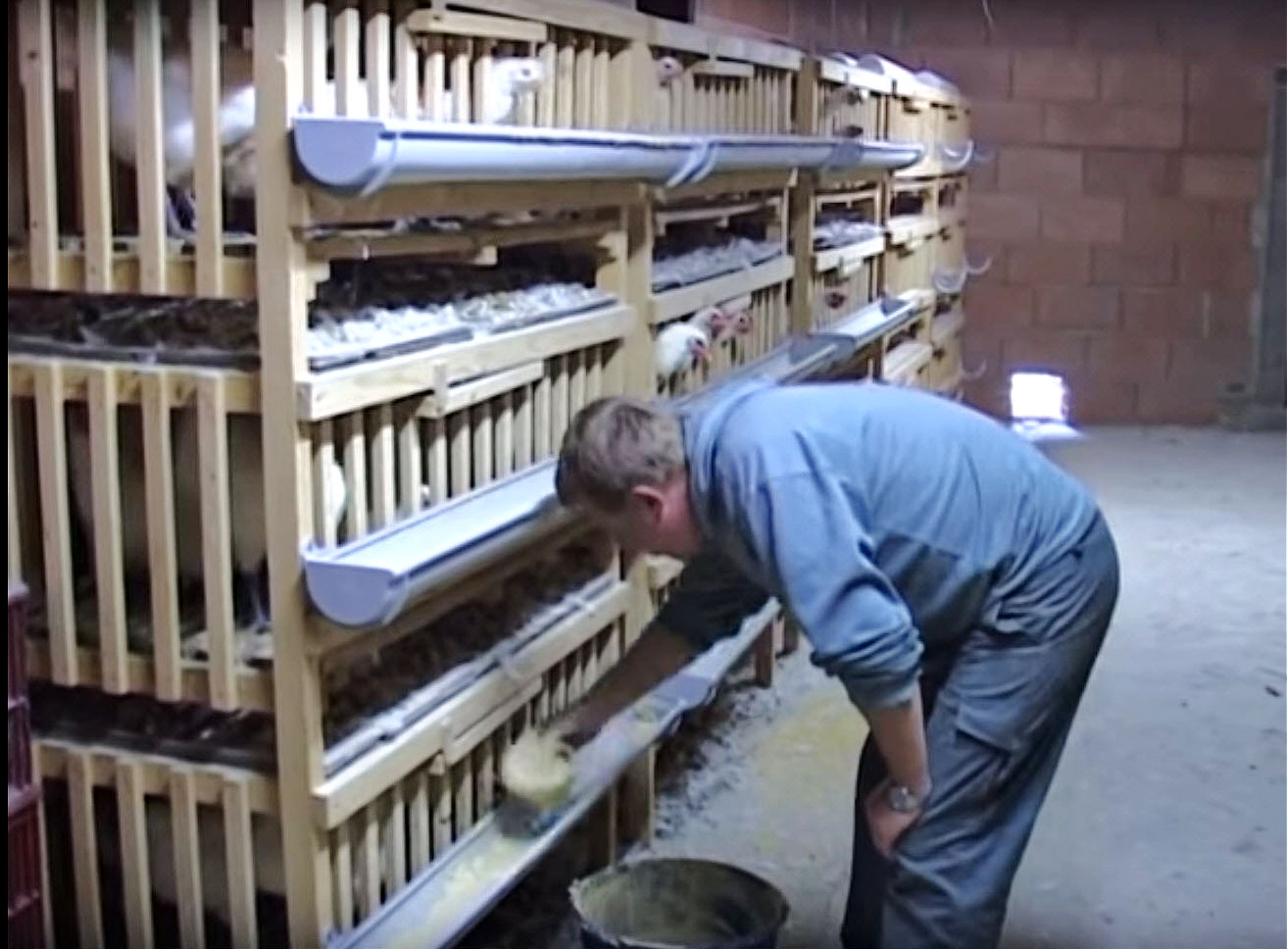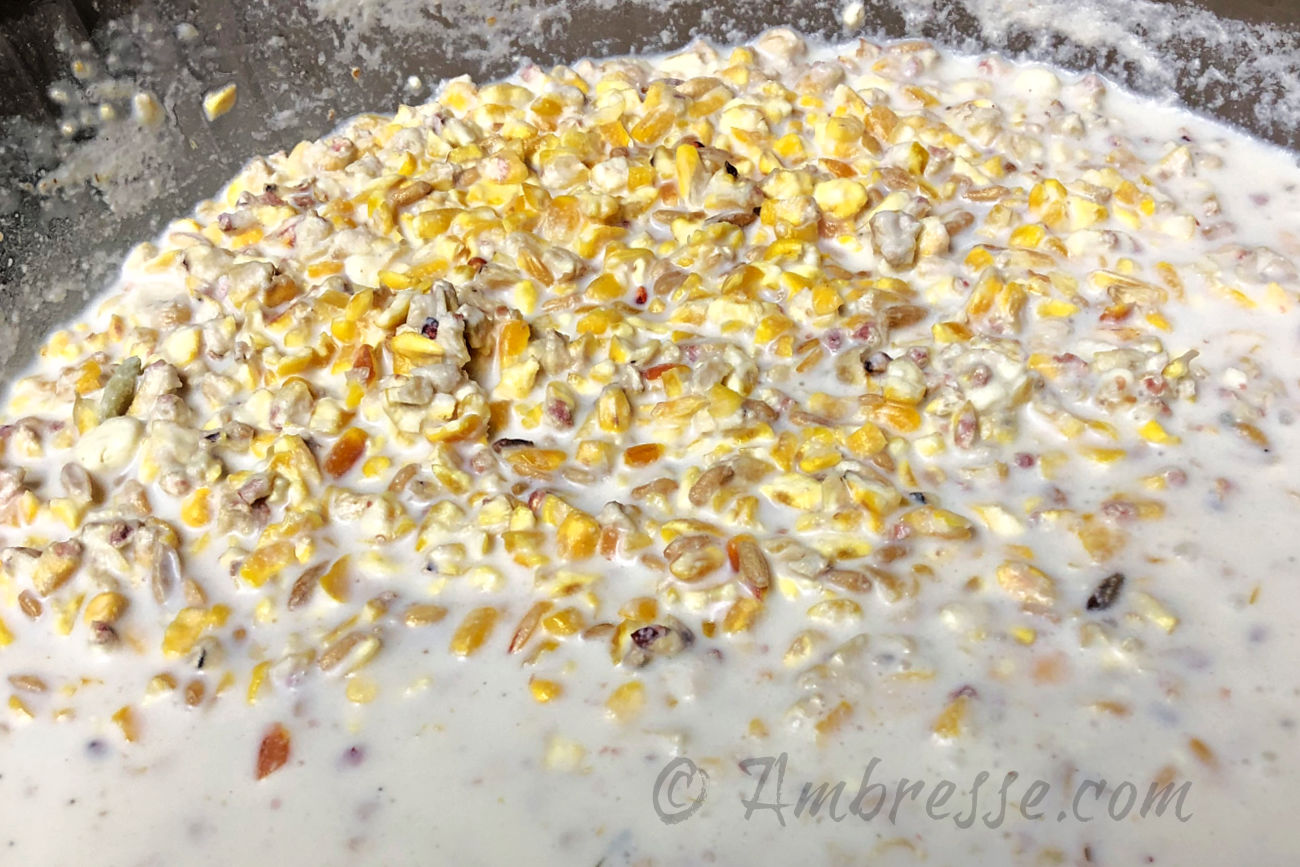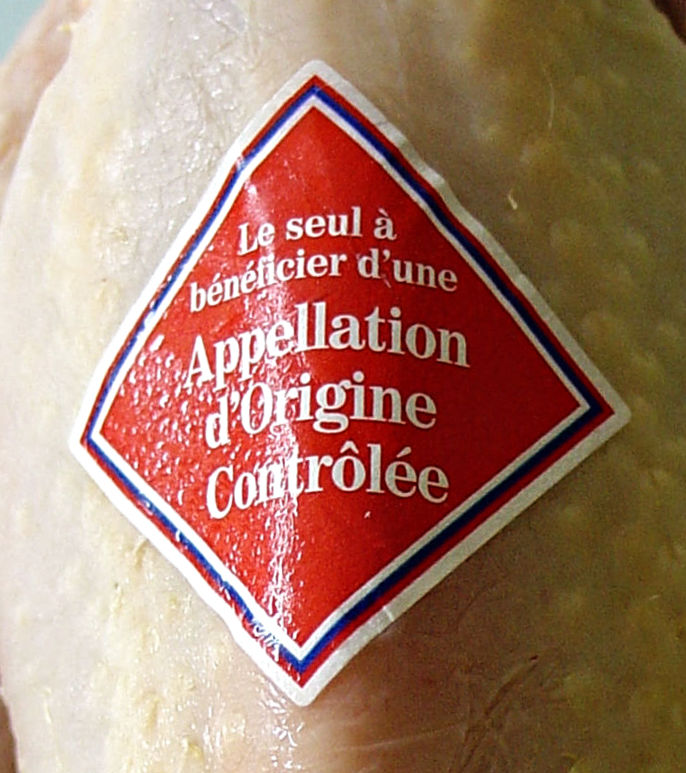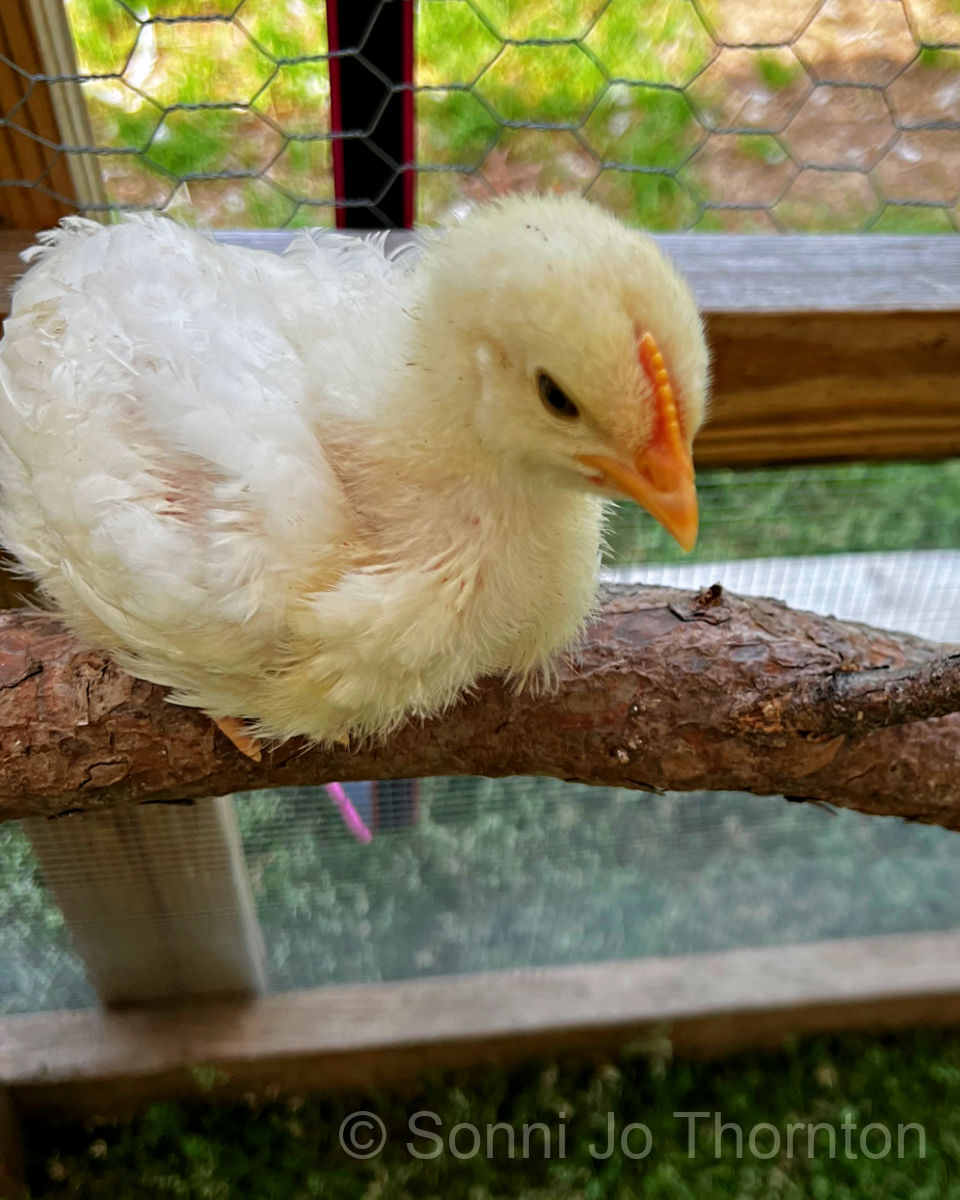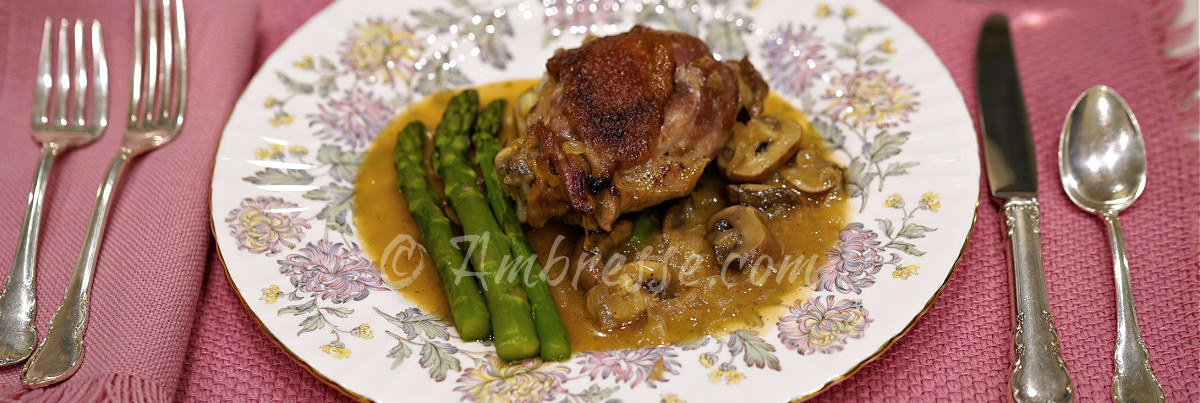French Bresse Finishing
French Bresse Finishing: How French Bresse Chickens in France are finished for market. This is our understanding regarding French methods of raising French Bresse meat birds, starting nearly from birth, and culminating several weeks after processing day.
Every step of the process is very specifically prescribed, due to the legal AOC designation that protect the identity of French Bresse chickens.
The finishing process for American Bresse chickens is closely modeled after French methods. But, without any official legal protections in North America, the coast is clear for individual ABC breeders to manage their own processing methods as best suits their needs and their local markets.
Preparation for French Bresse Finishing
In France, preparation for processing begins at age 5 weeks, with a specific protocol for feeding, foraging, and housing. Every step is designed with the end product in mind - the premium French Bresse chicken, whether this is a 16-week cockerel, a pullet, poularde, or 9-month-old capon.
From age 5 weeks to the beginning of the finishing process, French Bresse chicks are allowed to forage all day for bugs and greens in grassy pastures. Required are 108 square feet (10 square meters) per bird. The typical flock of a maximum of 500 birds forages in 5,000 square meters of grass (53,819 square feet, or 1.24 acres).
Their diet is supplemented with a lower-protein, locally grown whole grain mash (corn and wheat) soaked in skim milk. See photos below. The lower protein intake encourages foraging. Foraging contributes to both muscle mass and flavor, hence, to the unique qualities of poulet de Bresse.
Young pullets and cockerels are fed in this manner for 9 weeks, along with pasture foraging, until they are 14 weeks old. Poulardes (pre-laying hens) get 11 weeks on pasture and skim milk soaked grains (up till 16 weeks of age), and capons are given 23 weeks of pasture plus skim milk soaked grains.
Once the finishing process commences (at different ages for different products), birds are moved indoors to epinettes (wooden cages) housed in a peaceful, darkened, and quiet space, where they live a life of quiet and leisurely luxury for the last one to four weeks of their lives. They do nothing but lounge around and eat to their heart's content.
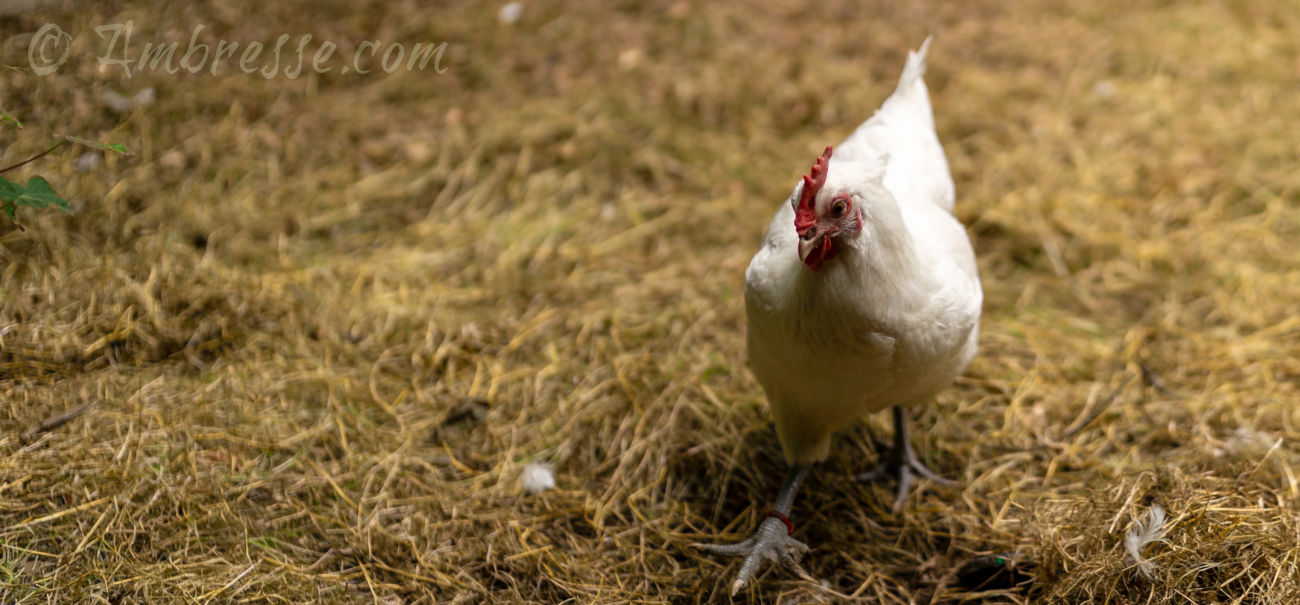
French Bresse Finishing Process: Life in the Epinette
Life in the epinette is the last stop before market day. The combination of dark quietness, grain and whole milk diet, and comfortable confinement is all wrapped up in the term, "finishing."
Once in the epinette, the feed consists solely of locally-sourced corn and wheat (some sources say white corn and buckwheat) soaked in whole milk from cows also raised in the Bresse region. The whole milk is likely to be powdered before use, as a matter of convenience and milk preservation.
Finishing lasts 1-4 weeks, depending on the market and the birds.
Pullets are finished for 2 weeks and processed at a minimum of 112 days (16 weeks) of age. They should weigh at least 1.2 kg (3.3 lb).
Poulardes (pre-laying pullets) are finished for 4 weeks and processed at a minimum of 120 days of age but more usually at 20-21 weeks. They should weigh at least 1.8 kg (4 lb).
Bresse cockerels might be finished and processed at 16 weeks, or they might be caponized and allowed to pasture forage for months.
- Cockerels (young roosters) are finished for about 8 days and processed at a minimum of 16 weeks of age. They should weigh at least 1.5 kg (3.3 lb).
- Capons (castrated cockerels) are finished for 4 weeks, and processed at 9 months old. They should weigh at least 3 kg (6.6 lb)
Get Epinette Building Plans!
Epinette for Chickens - Get beautiful PLANS for building French-style wooden-slatted finishing cages with troughs for finishing feed in front of the epinettes. These Epinette Plans were produced through collaboration with Leslee Wooton, who has been breeding and finishing American Bresse chickens since 2011 at Eldervine Farms in North Carolina.
(Photo is a screen grab from https://www.youtube.com/watch?v=iKj8vj8rFHo)
Why Caponize Before Finishing?
Most French Bresse cockerels are caponized at around 6-8 weeks of age and allowed to grow and pasture forage for months until late autumn or early winter. These will be finished and processed in time for the year-end holidays.
Why caponize? The reason is two-fold:
- The actions of testosterone on the cock's body counteract the finishing results, but caponizing minimizes testosterone levels permanently. Click here for details on testosterone and finishing cockerels (link coming soon).
- Capons are highly desirable in France for their large size and intense flavor and moistness, and therefore they command a high price. They are cooked low and slow, frequently in a creamy wine sauce with mushrooms.
It IS possible to finish intact cockerels. The secret is to process before testosterone levels peak to adult levels, which is why the French process cockerels between 16 - 18 weeks approximately.
French Bresse Finishing: The Finished Product
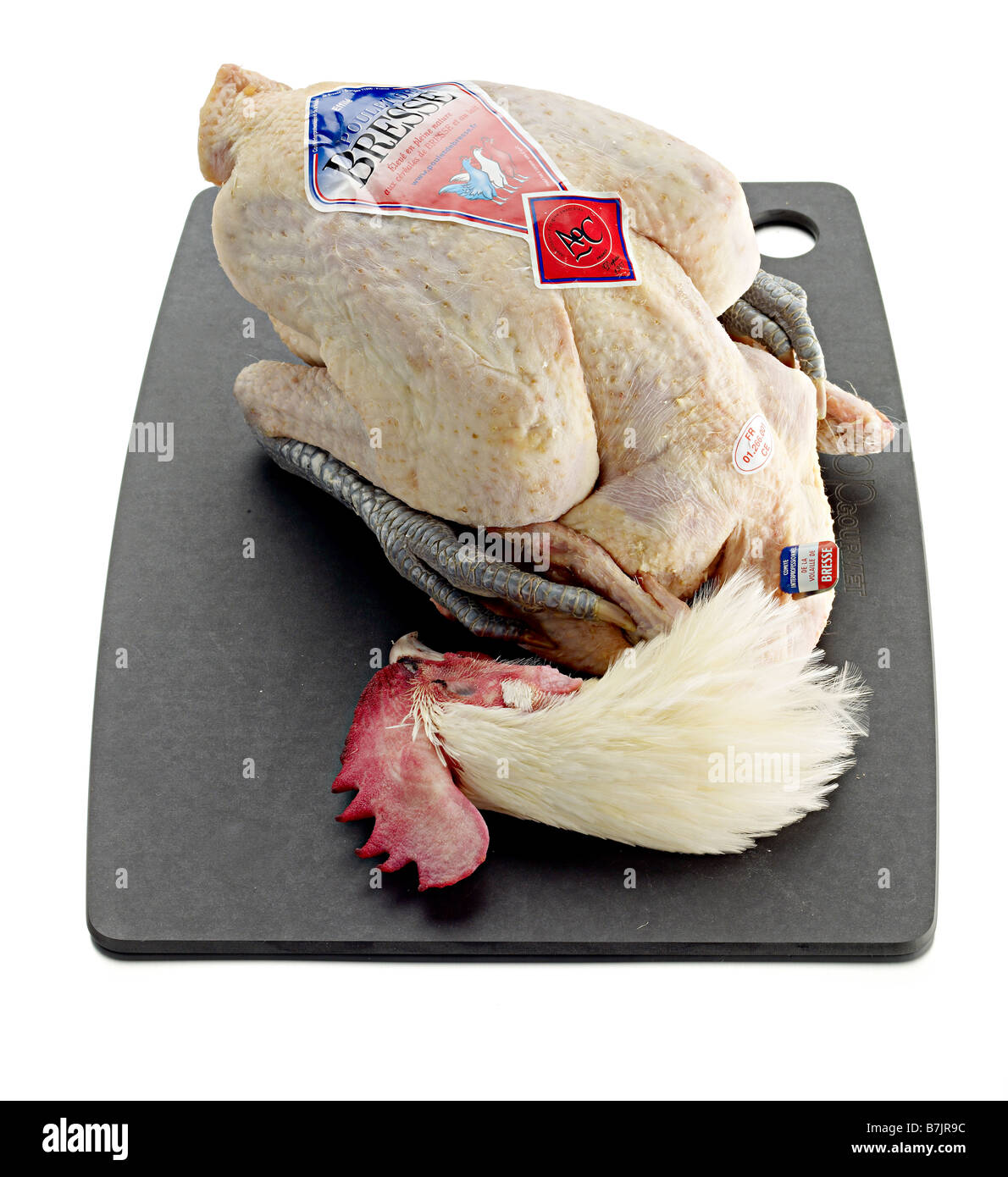
- Poulet de Bresse is air cooled rather than water chilled. The purpose of avoiding water for chilling is to maintain the rich flavor and unaltered texture of the meat.
- Once cooled, the carcass is tightly wrapped and then sewn into a linen or cotton sack. This serves two purposes: It helps maintain an air-free environment that prevents rapid spoilage for up to 8 weeks, and the pressure of the wrap helps to distribute fat from the fat pads into and around the surrounding muscles.
- In France, poulet de Bresse might be sold with the still feathered head, but it will always have the blue legs attached, so you will know that your pricy purchase is certainly a French Bresse chicken. One leg will be tagged with a label specifying the farmer's name and that of the processing plant.
The above French Bresse finishing processes are ALWAYS followed in Bresse townships by the producers of official, legally protected French Bresse poultry. These processes are extremely effective, the French poultry industry having matured their guidelines through many hundreds of years of producing, finishing, and processing.
A large part of the 'magic' is in the unique genetic makeup of French Bresse poultry.
French Bresse Gauloise - closely related to French Bresse chickens albeit raised outside the Bresse region - and American Bresse also finish beautifully because of their virtually identical genetics.
Left: The diamond-shaped Appellation d'Origine Controlee label on poulet de Bresse.
Bresse Gauloise are not given the title of "poulet de Bresse" nor the coveted blue, white, and red label because they are not raised in nor fed with food stuffs from the Bresse Valley.
French Bresse Finishing Practices are the Model for American Bresse Finishing
By understanding the time-tested French Bresse finishing model, you will be better equipped to decide how you'd like to proceed with the processing of your own American Bresse chickens.
Because American Bresse are raised outside of the boundaries of the Bresse Valley, there are no legal reasons to force certain finishing practices on breeders of American Bresse Chickens. Right now (late 2022), North American breeders each decide how, or even IF, their American Bresse market poultry will be finished before processing.
Just know that those breeders, families, and homesteaders that follow the French Bresse finishing processes as described here are finding excellent success - intense flavors and succulence, along with fat marbling in the muscle fibers.
Personally, I feel that even a week of French-style finishing makes a huge difference in the final product. It is not hard to do! Therefore it makes excellent sense to take the time to either learn the French Bresse finishing protocols, or to learn the American Bresse finishing practices that experienced North American breeders are using.
- Information on finishing American Bresse chickens can be found here.
- Check out the French-Style finish feed recipe used at Ambresse Acres.
Enjoy!
- Home
- Finishing American Bresse Chickens
- French Bresse Finishing
- Home
- History of French Bresse Chickens
- French Bresse Finishing
Reference:
- https://www.backyardchickens.com/threads/french-standards-for-raising-bresse-meat-chickens.866299/
- https://en.wikipedia.org/wiki/Appellation_d%27origine_contr%C3%B4l%C3%A9e
- https://www.thehappychickencoop.com/bresse-chicken/
Overheard...
Tasty Recipe! "I processed my first batch of Bresse... Today I roasted one according (somewhat) to the recipe posted on Ambresse. It was delicious! Tender, moist and succulent... So happy I chose this breed!" (B.E., MN, 12/11/2024).
Success: "I can't believe all the inquiries we get through your website. And it's been a great resource to send people to who are interested in the (AB) breed" (Utangard Farm, NH, 5/5/2025).
Informational: "Your site has the first accurate information about American Bresse chickens that I have seen in English. Thanks for your diligent work" (L. Wooton, NC, 12/17/2024).
Translate This Page
Traduire Cette Page
Traduzca Esta Pagina

News
American Bresse Breed Club web pages can be found under the Breed Club tab on the navigation bar. Any changes in Club status will be posted here!
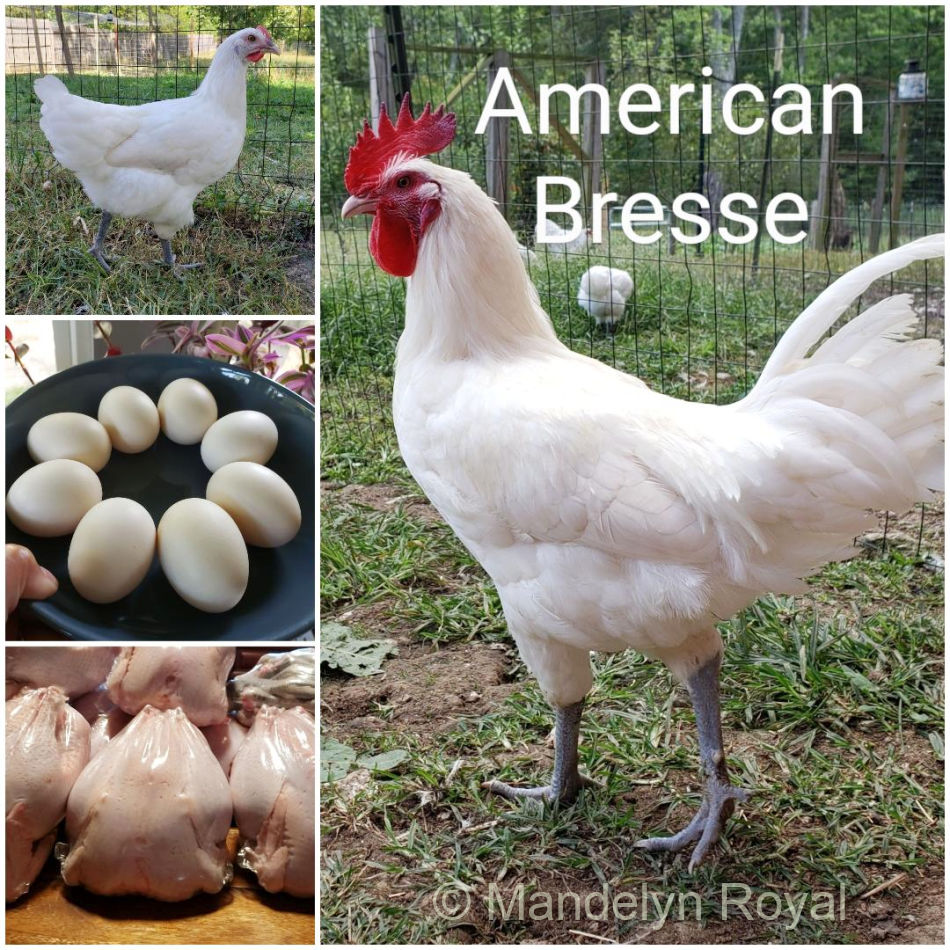
Photo credit: Mandelyn Royal.
